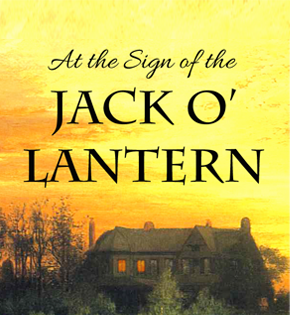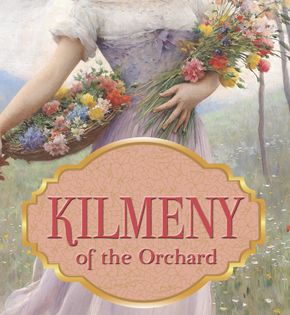American author Ralph Moody, in
his memoirs of growing up in turn-of-the-century Colorado, recalled attending
such a bonfire-lit New Year’s Eve party on the frozen South Platte River in
Littleton. Some nighttime skaters lit their way with torches; others carried
special skater’s lamps that hung from the wrist.
City dwellers were enthusiastic
skaters too—places such as New York’s Central Park and Boston’s Jamaica Pond
were crowded with thousands of skaters daily when the weather was suitable. In
Central Park, a red ball was hoisted on a tower that could be seen from a considerable
distance around to signify that the ice was safe for skating that day. For those
who were too frail or timid to try on skates, there were even chairs on runners
in which they could sit and be pushed around by another skater. A less skilled
lady skater—or perhaps just one who wished to remain close to the gentleman of
her choice—could hold onto his arm or even his coattails and simply glide while
he did the work for both of them!
No less an author than Leo Tolstoy
wrote a scene of skating-rink romance in Anna
Karenina, when Constantin Levin goes to the skating rink in Moscow’s
Zoological Gardens in hopes of meeting Kitty, the girl he loves, and is torn
between delight in her presence and agitation over whether or not he should tell
her of his love as they skate together. “Before him opened the skating rink,
and at once, among all the skaters, he recognized her . . . On that day of the week
and at that hour of the day, people of the same circle, acquaintances, gathered
on the ice. Here there were expert skaters who showed off their art, and
learners leaning on chairs, moving timidly and clumsily, and young boys, and
old people . . . To Levin they all seemed chosen and lucky because they were there,
close to her.”
Another popular winter pastime, and
another one with a long history, was sleigh-riding—which also provided the
basis for winter parties. Concord, Massachusetts native Edward Jarvis recalled
such gatherings during his youth in the early 1800s: “Sleigh riding parties
were a very pleasant means of winter amusement…I remember in my early life
there was a company that was said to include a hundred sleighs…There was a long
file stretching as far as the eye could reach, and the many bells on each
horse—one string and on some two strings, more than a hundred strings in
all—made a great and very exciting sound to the people and children. They went
to some taverns…had then some entertainment, lunch or dinner, and returned in
high glee…These parties embraced all ages—young and old, the grave and the gay;
all [were in] harmony and [there was] high enjoyment.” Laura Ingalls Wilder
wrote of similar sleighing parties in the Dakota prairie town where she lived
in the 1880s, with a procession of sleighs traveling the length of the main
street, out onto the snowy prairie and circling back again into town—their
occupants sometimes joining in singing a song, such as that classic of all
sleigh-riding songs: James Pierpont’s “Jingle Bells.”
Children playing in town streets got
in on the sleigh-riding action by rushing after passing sleighs and trying to
catch hold of them so they could tie on their own sleds for a free ride, as
Booth Tarkington describes in TheMagnificent Ambersons. And for adults, sleigh-riding was of course a
favorite winter activity for courting couples. In The Magnificent Ambersons, Georgie Amberson Minafer’s first action
upon being smitten with Lucy Morgan is to ask—no, insist that she accompany him
on a sleigh ride the next day. But their ride, one of the book’s most memorable
scenes, culminates—like a verse of “Jingle Bells”—with a spill into a snowbank!
And in our newest vintage release, The Romance of a Christmas Card by Kate Douglas Wiggin, Dick Larrabee recognizes his childhood sweetheart in a painting on a Christmas card—"A stranger wouldn't have known it for Letty, but if it had been only that cape I should have guessed. She wore it every winter, skating, you know—and it's just the color of her hair."—and decides it's finally time to go home and make amends with his past.
The Victorians and Edwardians sure knew how to make the most of a snowfall, and though times have changed and we're not likely to see a sleigh riding party go by these days, we still know how to have fun in the snow. What's your favorite winter activity? (Besides curling up by the fire with a good book, that is!)
POSTED BY: Elisabeth Grace Foley
The Victorians and Edwardians sure knew how to make the most of a snowfall, and though times have changed and we're not likely to see a sleigh riding party go by these days, we still know how to have fun in the snow. What's your favorite winter activity? (Besides curling up by the fire with a good book, that is!)
POSTED BY: Elisabeth Grace Foley
The Romance of a Christmas Card by Kate Douglas Wiggin
Professionally edited and formatted for today's e-readers, and featuring chapter artwork, a glossary, and the touching Christmas poem "Das Krist Kindel." Download the Legacy Vintage Collection Enhanced eBook Edition today for 99₵!





































